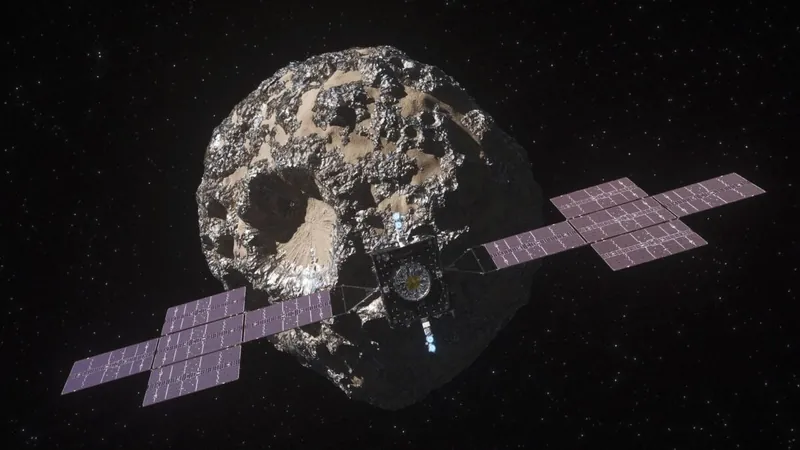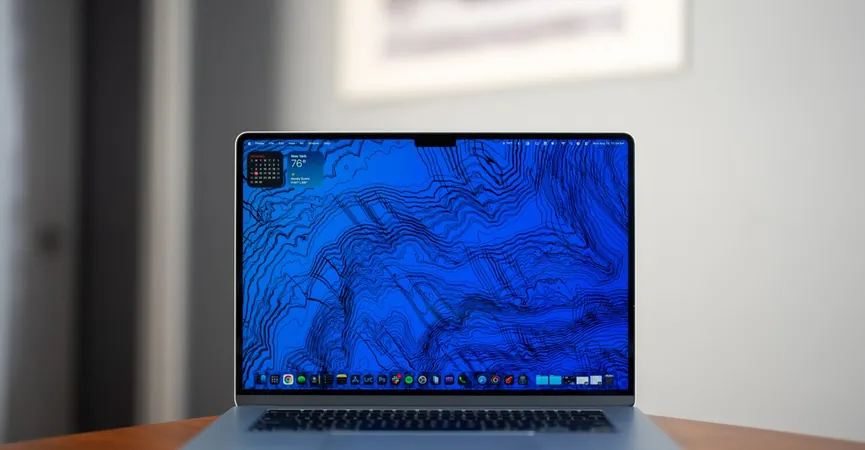
Revolutionizing Space Communication: A Leap Towards the Solar System Internet!
2025-07-15
Author: Jia
In an extraordinary breakthrough, scientists from the European Space Agency (ESA) have successfully used a powerful laser to communicate with a spacecraft located 165 million miles away, paving the way for what could be termed the "Solar System Internet." This milestone marks a significant advancement in optical communication systems intended for future lunar and interplanetary missions.
The historic experiment took place at the Kryoneri Observatory in Greece, where a laser beam was directed at NASA's Psyche mission. The spacecraft responded with a return signal, which was then captured by the Helmos Observatory, situated 23 miles away. Mariella Spada, ESA's head of Ground Systems Engineering and Innovation, expressed her excitement, stating, "This is an amazing success that lays a foundation for an expansive Solar System Internet."
To achieve this feat, NASA's Jet Propulsion Laboratory employed advanced navigation techniques, including Delta-Differential One-Way Ranging, to accurately pinpoint Psyche’s location. Flight dynamics experts meticulously planned the test, factoring in environmental influences like air density and temperature, even temporarily closing sections of Greece’s airspace to ensure safety.
The two-way optical communication involved overcoming significant technical hurdles: creating a laser potent enough to precisely target a distant spacecraft and developing a receiver sensitive enough to capture faint return signals that might consist of just a few photons after traversing unimaginable distances.
This test is just the first of four planned laser exchanges this summer, part of NASA's Deep Space Optical Communications (DSOC) experiment aboard the Psyche mission, which aims to study a metal-rich asteroid beyond Mars. Psyche is also equipped with a gold-capped laser transceiver designed specifically to explore high-speed data transmission for future missions.
In a stunning demonstration of this technology, the DSOC successfully transmitted a video of a playful orange tabby cat named Taters chasing a laser pointer back to Earth from a staggering 19 million miles away—showcasing the potential of laser communication.
While Psyche currently uses traditional radio communication, adopting laser systems could dramatically enhance the speed and efficiency of data transfer. These optical systems allow for data to be encoded within the oscillations of light waves, enabling data transmission rates that are 10 to 100 times faster than current radio frequency methods.
As ESA project manager Andrea Di Mira noted, merging these laser technologies with existing radio systems is crucial for handling the increasing amounts of data generated by space exploration missions.
The precision required for this optical communication is monumental: lasers are narrower than radio signals, meaning the DSOC’s laser must be expertly aimed, accounting for Earth’s movement to ensure the signal reaches the intended ground-based receiver.
The successful test signals a major leap toward achieving high-speed connectivity similar to terrestrial internet systems for future spacecraft venturing into the cosmos, as highlighted by Rolf Densing, ESA’s Director of Operations.



 Brasil (PT)
Brasil (PT)
 Canada (EN)
Canada (EN)
 Chile (ES)
Chile (ES)
 Česko (CS)
Česko (CS)
 대한민국 (KO)
대한민국 (KO)
 España (ES)
España (ES)
 France (FR)
France (FR)
 Hong Kong (EN)
Hong Kong (EN)
 Italia (IT)
Italia (IT)
 日本 (JA)
日本 (JA)
 Magyarország (HU)
Magyarország (HU)
 Norge (NO)
Norge (NO)
 Polska (PL)
Polska (PL)
 Schweiz (DE)
Schweiz (DE)
 Singapore (EN)
Singapore (EN)
 Sverige (SV)
Sverige (SV)
 Suomi (FI)
Suomi (FI)
 Türkiye (TR)
Türkiye (TR)
 الإمارات العربية المتحدة (AR)
الإمارات العربية المتحدة (AR)